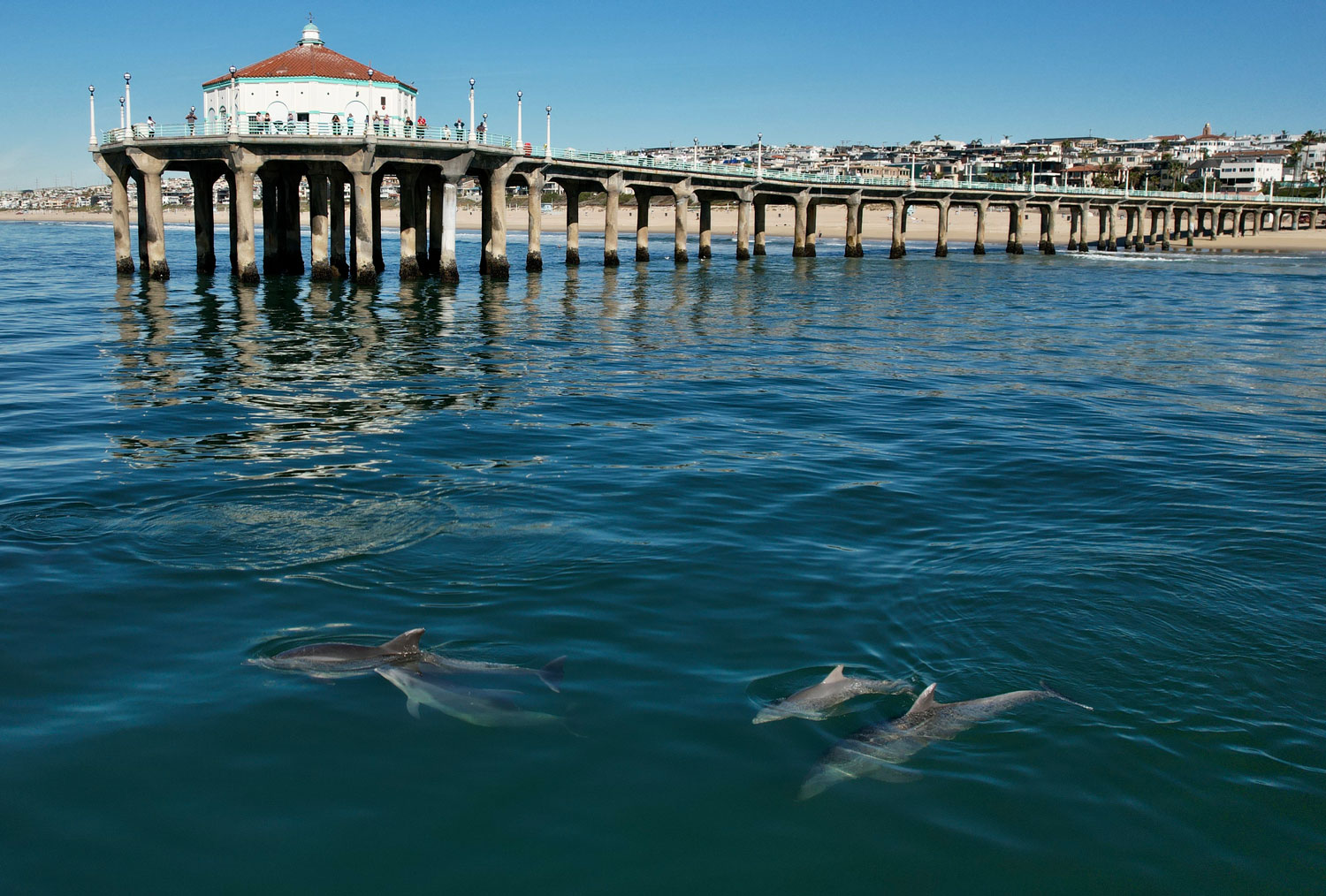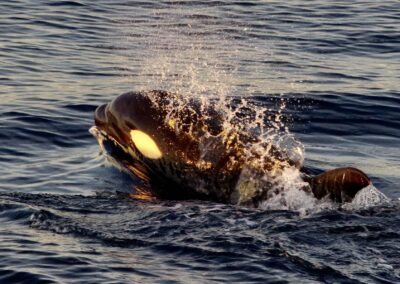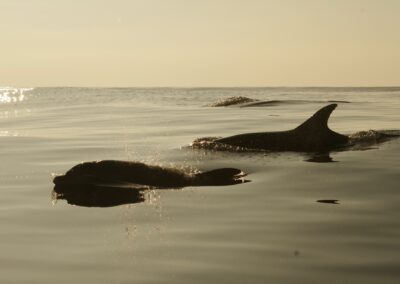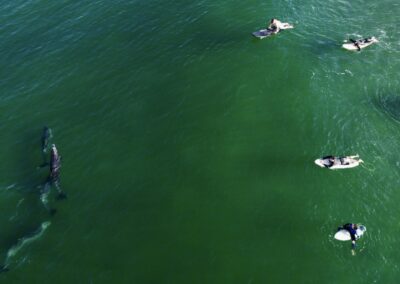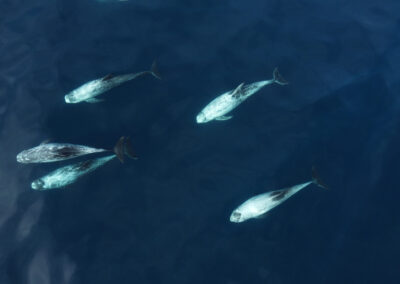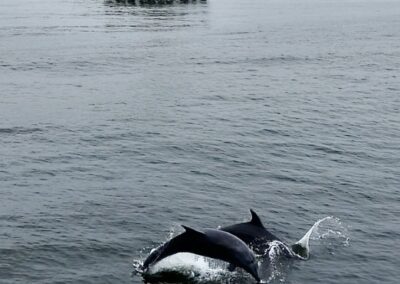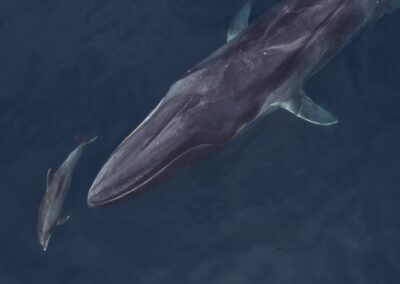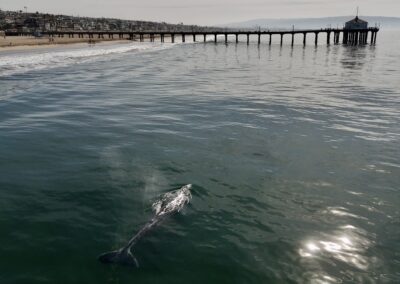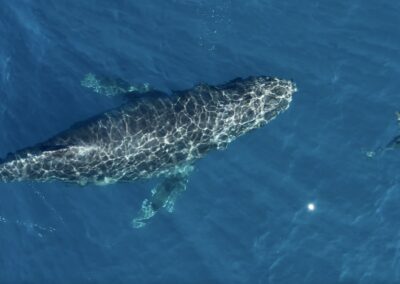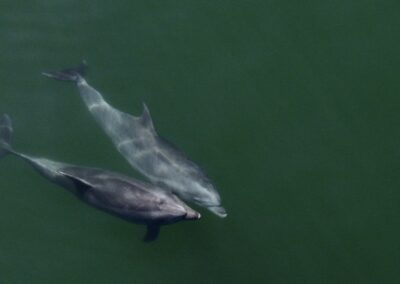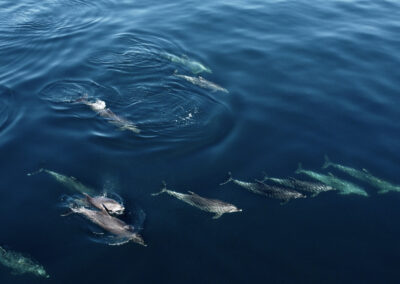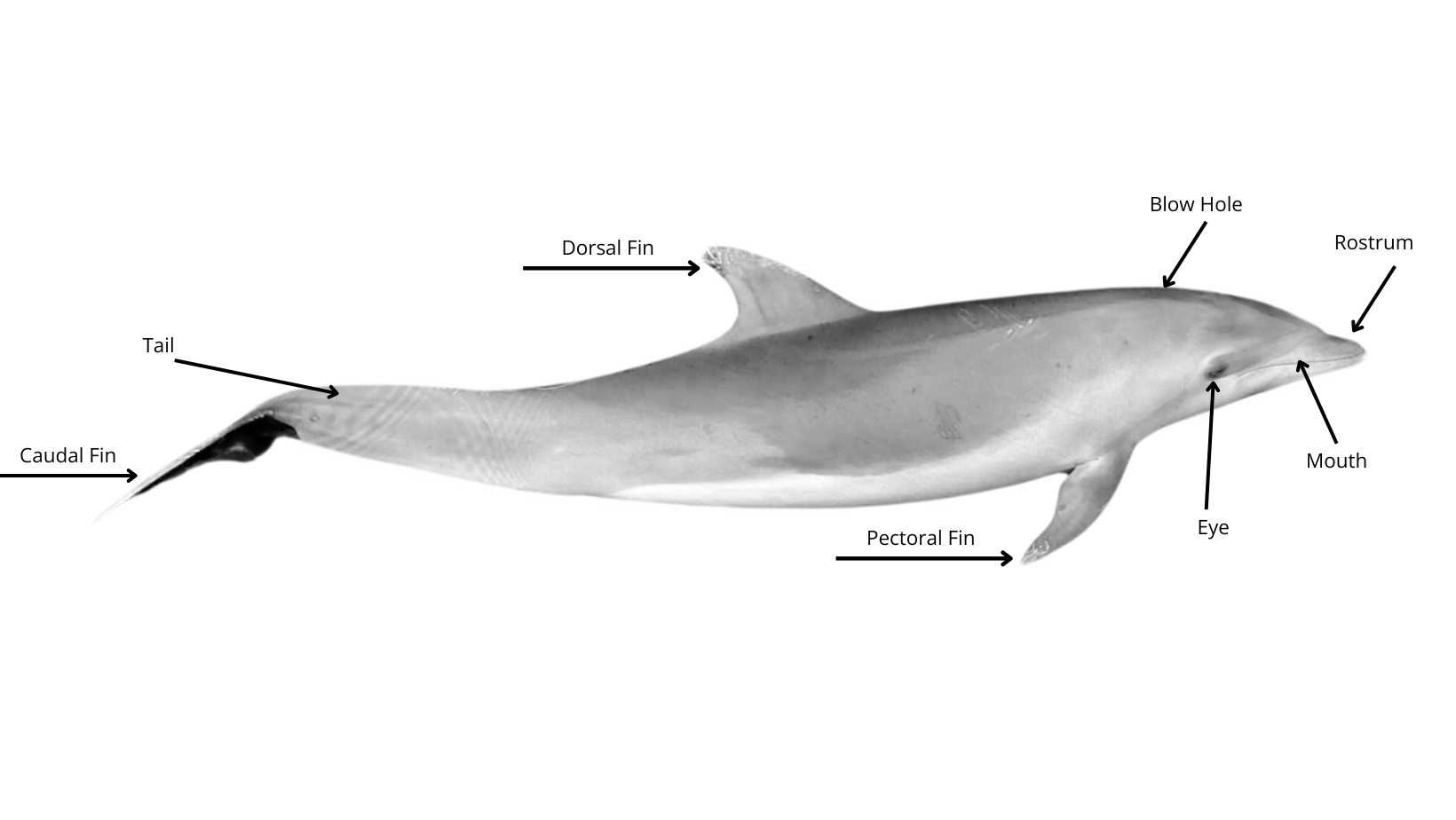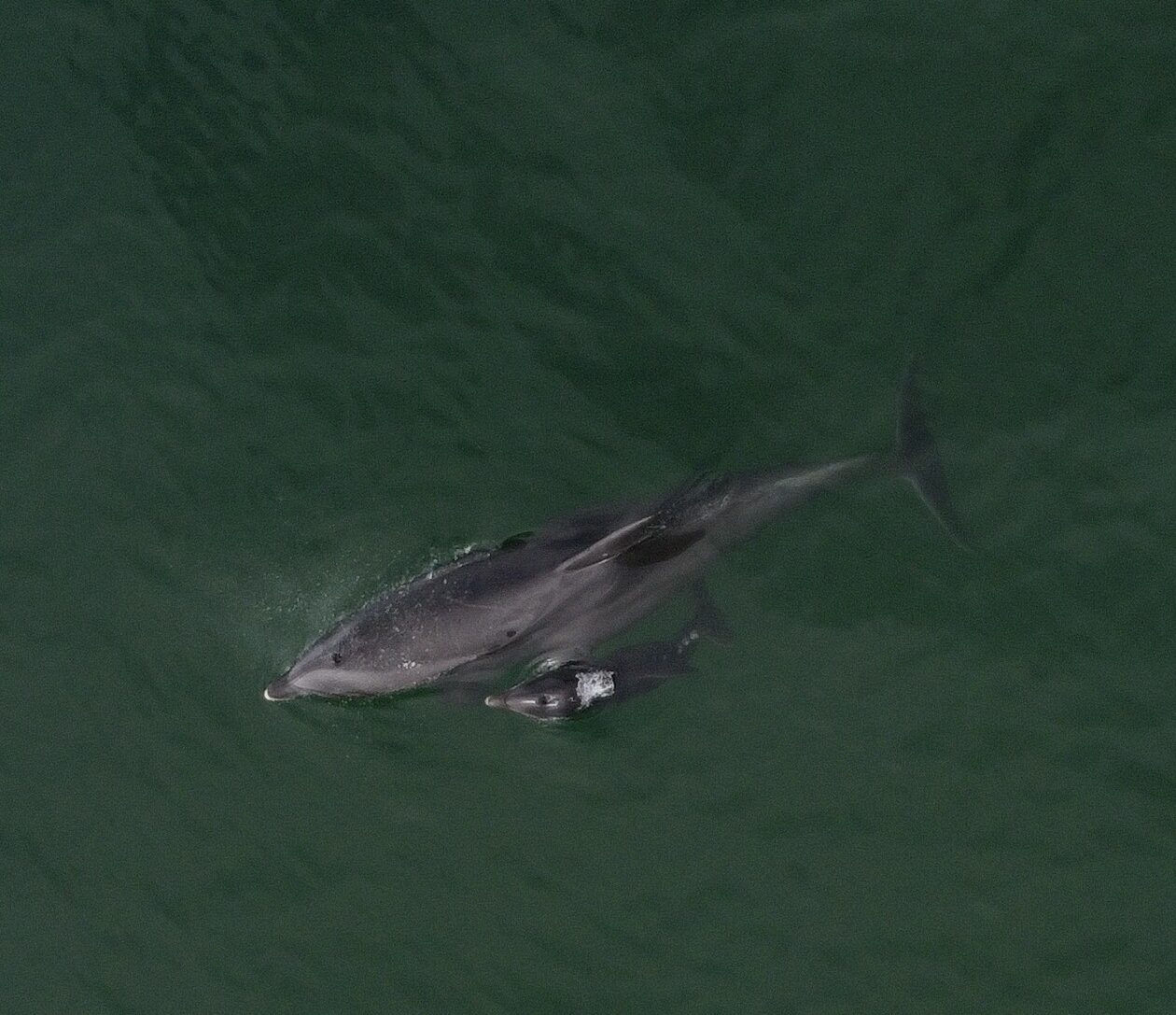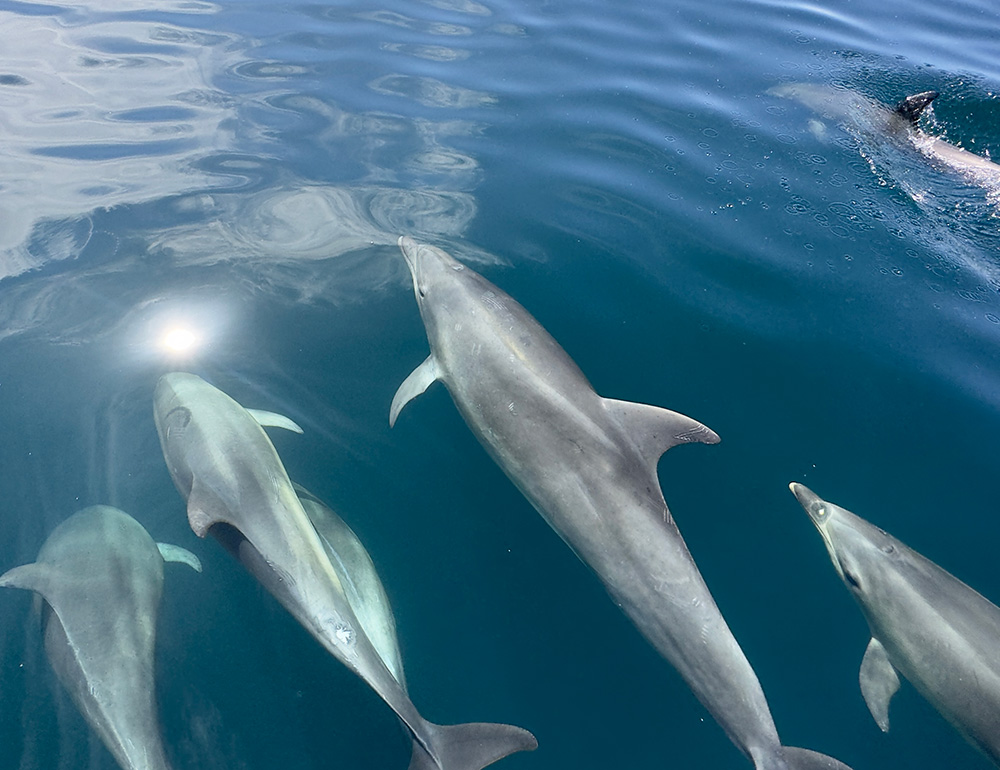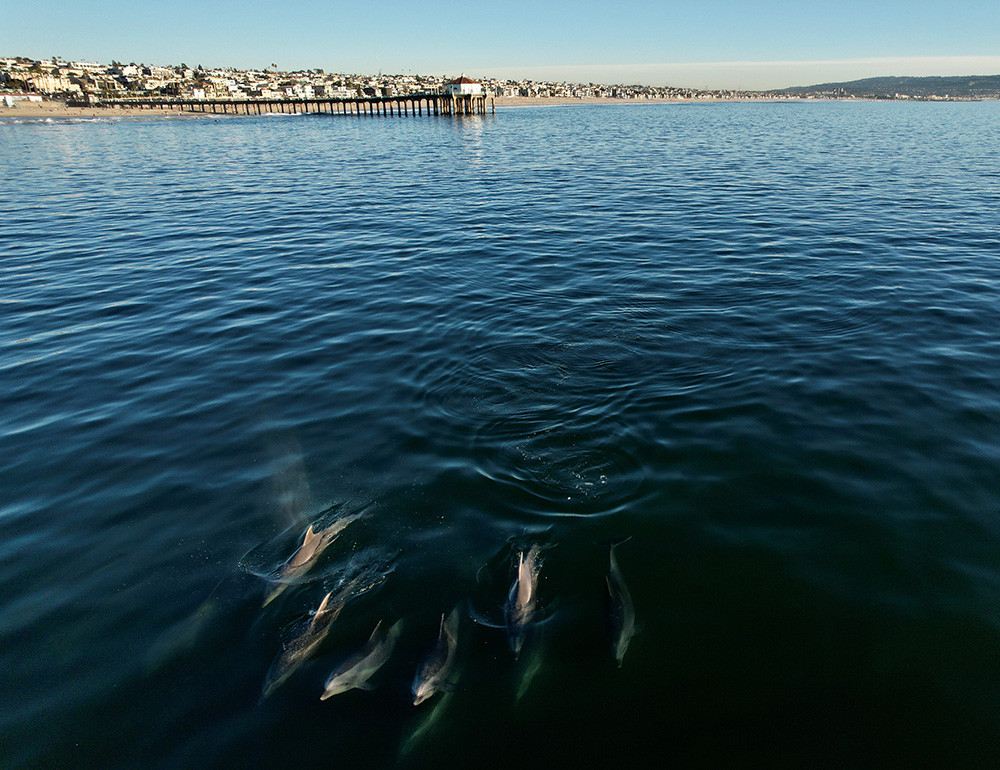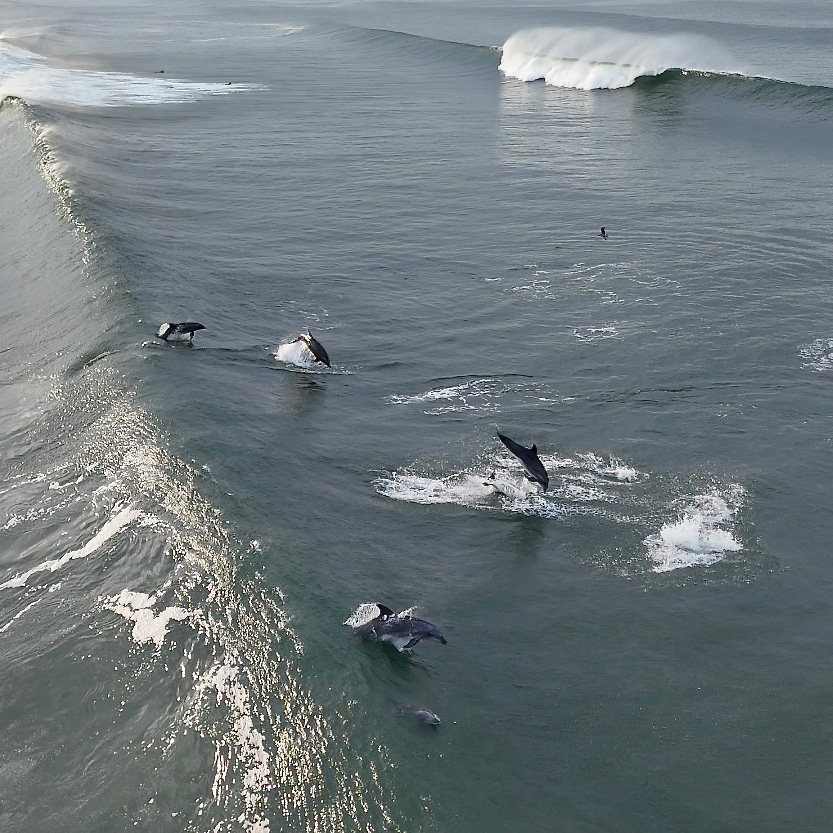OTS Coastal Bottlenose Dolphin Project
© 2024 Eric Martin Aquarist and Creative Arts Director, Oceanographic Teaching Stations, Inc.
Welcome to the OTS Coastal Bottlenose Dolphin Project
Every day, bottlenose dolphins swim along the coast of the Santa Monica Bay, to the delight of beachgoers, swimmers, surfers and visitors. Bottlenose dolphins are among the most recognizable cetaceans (whales and dolphins) since they live in close proximity to humans in nearshore coastal waters, bays, and estuaries. They are often involved in captive dolphin performances and “swim with the dolphins” programs. Captive bottlenose dolphins have contributed significantly to research in echolocation, thermoregulation, diving physiology, communication and behavior. Despite the wealth of information from captive dolphins, less is known about dolphin behavior in the wild, even though knowledge of this behavior can contribute to dolphin conservation programs.
Your tax-deductible donation will help us continue our observations of the coastal bottlenose dolphins
MISSION STATEMENT
Since 2018, Oceanographic Teaching Stations, Inc. (OTS) aquarist, Eric Martin, has been observing, photographing and video recording the behavior of three pods of coastal bottlenose dolphins that are frequent visitors to the Manhattan Beach Pier/Roundhouse Aquarium. These observations will be used to prepare educational material and will be shared with the public to promote dolphin awareness and conservation. All photography was conducted following the NOAA guidelines for responsible observation of dolphins and other marine mammals.
Orca
Orcas are often referred to as whales, but they are actually the largest member of the dolphin family and closely related to our bottlenose dolphins. © 2024 Eric Martin Aquarist and Creative Arts Director, Oceanographic Teaching Stations, Inc.
Bottlenose in sunset
Offshore bottlenose swimming in calm seas at sunset. © 2024 Eric Martin Aquarist and Creative Arts Director, Oceanographic Teaching Stations, Inc.
Dolphins and surfers
Sometimes dolphins and humans enjoy the same waves. © 2024 Eric Martin Aquarist and Creative Arts Director, Oceanographic Teaching Stations, Inc.
Risso dolphins
While not a common site off the Manhattan Beach pier, risso dolphins come into our area to feed on squid several times a year. They come in groups from 7-100 individuals. © 2024 Eric Martin Aquarist and Creative Arts Director, Oceanographic Teaching Stations, Inc.
Playing dolphins
Two dolphins playing near the Manhattan Beach pier. © 2024 Eric Martin Aquarist and Creative Arts Director, Oceanographic Teaching Stations, Inc.
Fin whale and offshore bottlenose dolphin
It’s not uncommon to find dolphins interacting with larger whales. © 2024 Eric Martin Aquarist and Creative Arts Director, Oceanographic Teaching Stations, Inc.
Gray whale
Each migration season, several gray whales swim very close to shore in Santa Monica Bay. © 2024 Eric Martin Aquarist and Creative Arts Director, Oceanographic Teaching Stations, Inc.
Humpback and common dolphins
Humpback whale interacts with common dolphins. © 2024 Eric Martin Aquarist and Creative Arts Director, Oceanographic Teaching Stations, Inc.
Bonding dolphins
In dolphin society, bonding is an important activity. These bonds can last a lifetime. © 2024 Eric Martin Aquarist and Creative Arts Director, Oceanographic Teaching Stations, Inc.
Offshore bottlenose dolphins
Offshore bottlenose are often found in groups of over 100, unlike the coastal bottlenose. © 2024 Eric Martin Aquarist and Creative Arts Director, Oceanographic Teaching Stations, Inc.
WHO ARE WE?

Eric Martin
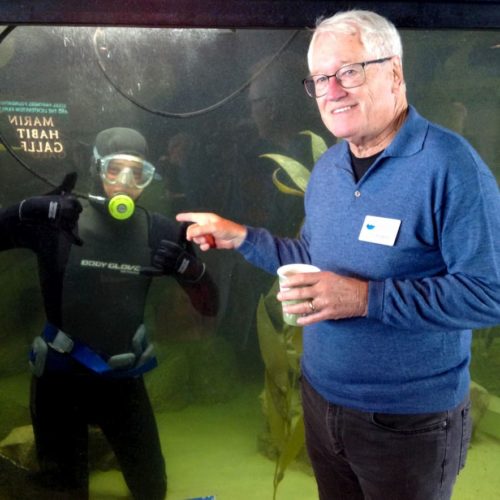
John Roberts

Val Hill
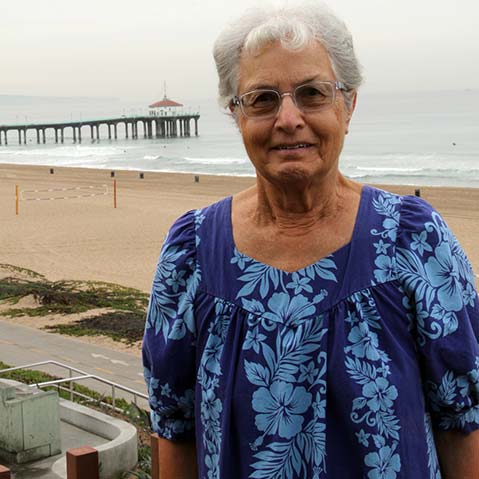
Lynne Gross

Charles “Chuck” Milam

Matt Friedman

Richard “Dick” Fruin
ABOUT BOTTLENOSE DOLPHINS
Bottlenose dolphins (Tursiops truncatus), also called common bottlenose dolphins, are found in tropical and temperate oceanic waters throughout the world. They are generalists, able to occupy a number of different habitats and utilize a varied diet, including small fish, squid, and crustaceans. Depending on the prey and the local environment, they use a variety of feeding behaviors.
Bottlenose dolphins are mammals that need to surface to breathe every few minutes. They have a streamlined body and lack many external structures of terrestrial mammals, including hind-limbs and ears. This allows them to swim at speeds greater than 20 miles per hour. They range in length from 6 to 13 feet and weigh between 500 and 1400 pounds. Adult males are larger than females. Their lifespan can be 40 years or greater, and females tend to live longer than males.
Bottlenose dolphins do not have a strictly defined mating season and newborn calves are seen throughout the year. Their reproductive anatomy and behavior are complex. Dolphins have no obvious secondary sexual characteristics, making it difficult to differentiate males from females. Gestation is approximately 12 months. Calves will nurse for 2 years or more and remain associated with their mothers for 3-6 years.
In addition to the coastal bottlenose dolphins we observe, there are local offshore bottlenose dolphins. The two represent different ecotypes (separate populations adapted to different local conditions). The coastal and offshore bottlenose dolphins differ somewhat in morphology and genetic makeup.
DOLPHIN BEHAVIOR
How can we understand dolphin behavior? Anthropomorphizing, or attributing human emotions or intentions to animals, is discouraged by some scientists. Other scientists argue that ignoring animal cognition and emotions, especially in highly intelligent and social animals like dolphins, may result in our missing something fundamental.
One way to understand behavior is to ask how it is adaptive. Adaptive behavior is defined as any behavior that contributes directly or indirectly to an individual’s reproductive success. Darwin’s theory of natural selection is often stated as “survival of the fittest,” but “reproduction of the fittest” is a better description. A more complete understanding of bottlenose dolphin behavior, including family structure, migration patterns, resource utilization and interaction with other species, including humans, could improve efforts to conserve these charismatic animals.
SOME EXAMPLES OF DOLPHIN BEHAVIOR WE HAVE OBSERVED
1. Family associations
2. Feeding
3. Mating
4. Interactions between different groups/families/species
5. Cooperative behavior
6. Interactions with humans
HOW TO RESPONSIBLY OBSERVE DOLPHINS AND OTHER MARINE MAMMALS
www.oceanconservation.org/be -whale-aware/
www.fisheries.noaa.gov/topic/marine-life-viewing-guidelines
GUIDELINES FOR OBSERVING WHEN AT SEA
- Keep your distance (100 yards for whales, 50 yards for dolphins, porpoises, seals, sea lions, and turtles).
- Stop or slow down and avoid sudden changes in speed or direction
- Never follow behind, approach head on, encircle, or trap animals between your vessel and shore
- Never go between a mother and calf
- Limit your observation time to 30 minutes
- Never interact with (touch, feed, or ride) the animals
STRANDED ANIMAL SOS
See a dolphin or other marine mammal stranded on the beach and in distress?
- Do not touch, pick up or feed the animal.
- Do not try to return the animal to the water.
- Note the location as accurately as possible.
- Call Marine Animal Rescue in El Segundo 310-455-2729 or Marine Mammal Care Center 1-800-39-WHALE.
FURTHER READING
For More Information about Bottlenose Dolphins, See the Following:
- https://www.fisheries.noaa.gov/species/common-bottlenose-dolphin
- https://animaldiversity.org/accounts/Tursiops_truncatus/
- https://www.marinemammalcenter.org/animal-care/learn-about-marine-mammals/cetaceans/common-bottlenose-dolphin
- https://www.oceanconservation.org/
For a Narrative Description of Dolphin Research, see:
Bearzi, Maddalena. Dolphin Confidential: Confessions of a Field Biologist. Chicago: University of Chicago Press, 2012.
DOLPHINS (AND THEIR COUSINS) IN THE NEWS
- https://easyreadernews.com/dolphins-off-the-palos-verdes-coast-are-our-ambassadors-of-the-deep/
- https://gizmodo.com/famous-orca-mom-seen-carrying-dead-calf-for-the-second-time-2000545574?utm_source=gizmodo.com&utm_medium=email&utm_campaign=share
Your tax-deductible donation will help us continue our observations of the coastal bottlenose dolphins
Join us for our next speaker series event: Talking Trash
Free Public Lecture at the MB Library Tuesday, February 4 | 6:00PM – 7:00PM
Join Dr. John H. Dorsey for an engaging evening on the impact of trash in our oceans and beaches, with a focus on Santa Monica Bay. Learn what steps we can take to help clean up and protect our coastlines.

